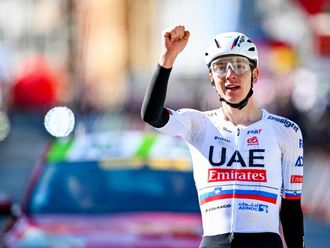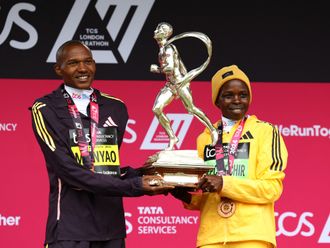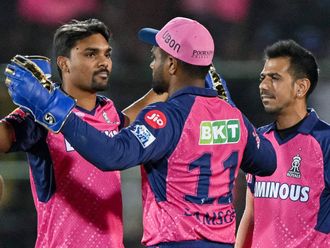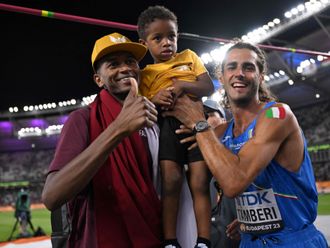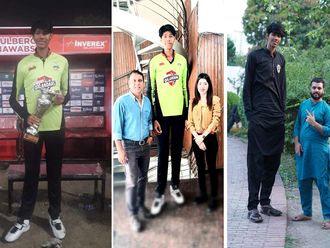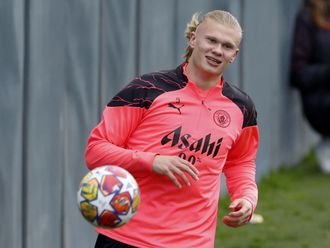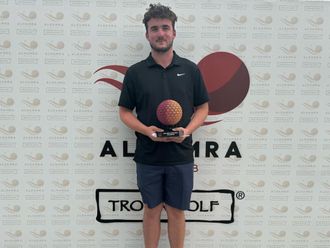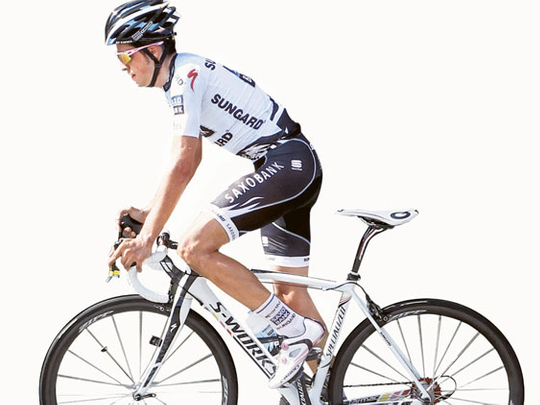
Paris: Much to the dismay of Tour de France organisers, a cloud of doping suspicion will hang over their race, and in particular over triple champion Alberto Contador, when the 2011 edition begins tomorrow.
The 28-year-old Contador will start the race from Passage du Gois in the Vendee region still waiting for the Court of Arbitration for Sport (CAS) to rule on an appeal concerning a failed dope test last year.
Contador was cleared by the Spanish federation but the International Cycling Union (UCI) and the World Anti-Doping Agency (WADA) appealed.
The CAS will not hear the appeal until August, meaning overwhelming favourite Contador could end up losing two Tour titles if the decision goes against him.
Last year, the Tour was rocked by Floyd Landis' doping allegations against seven-times champion and fellow American Lance Armstrong.
Embarrassment
Contador's presence on the Tour, while his case remains unresolved, is another embarrassment this year.
"We wanted a quick resolution, before the Tour, but it looks like it was too much to ask," Tour director Christian Prudhomme said.
On the road, the slender Spaniard has been his brilliant and dominant self this season, snatching nine victories and winning the Giro d'Italia in merciless fashion.
Contador, whom Armstrong described as "the most talented guy to ever throw a leg over a bike", used his outstanding climbing abilities to destroy the field in Italy and could become the first rider since Marco Pantani in 1998 to achieve a Giro/Tour double.
This year's route will favour the climbers and the Tour is likely to be decided during a tough third week in the Alps, where the race went for the first time 100 years ago.
The Col du Galibier will be climbed twice, with one stage finishing at l'Alpe d'Huez and featuring the famous 21 hairpin bends to the ski resort.
Twenty-three mountain passes are included in the Tour and it seems only Andy Schleck is capable of beating Contador.
Unknown quantity
Contador himself admits his form is something of an unknown quantity after his exertions in the Giro.
"As time goes by, I feel more and more rested [after the Giro] but I'm still a bit in the dark because all I did was rest," Contador said last week.
"I don't know how I will respond [to the efforts]. Undoubtedly, I lack physical but also mental freshness."
Contador, booed by the fans during the Giro, could also get a cool reception from the French crowd, but the determined Spaniard is used to it, as well to the media grilling he is likely to face.
Last year, the crowd hissed at him after he gained 39 seconds on Schleck following his attack in a mountain stage after the Luxembourg rider's chain had come off.
Schleck, who has finished runner-up to Contador in the last two years, will once again be the champion's top challenger on the French roads, with a handful of outsiders hoping to make it to the podium.
Schleck left Saxo Bank to launch his own outfit, Leopard Trek with several others, including his brother Frank and Olympic and world time-trial world champion Fabian Cancellara.
In the absence of last year's third-placed Denis Menchov, whose team were not invited, the battle for the podium is likely to involve Bradley Wiggins, who is looking to become the first Briton to finish in the top three.
Common Cycling Injuries
- Carpal Tunnel Syndrome
Carpal Tunnel Syndrome is the result of your median nerve becoming compressed as it passes through a small tunnel formed by the wrist bones. The symptoms begin when the pressure inside the tunnel becomes too high. The pressure increase occurs when either of two things happens: The tunnel space decreases, such as when the wrist swells eg after a traumatic injury or fracture.
When the contents of the tunnel (median nerve, blood vessels and tendons) enlarge.
Both of these situations increase the pressure on the nerve, leading to the annoying symptoms.
- Back Muscle Strainor Ligament Sprain
Muscle strains and ligament sprains and lumbar sprains are the most common causes of low back pain. A low back muscle strain occurs when the muscle fibres are abnormally stretched or torn. Muscle fatigue, excessive loads or poor lifting postures are the most common problems.
A lumbar ligament sprain occurs when the ligaments (the tough bands of tissue that limit the amount of movement at available at each spinal level), are torn from their attachments.
Groin strain
Groin strain is a tear or rupture to any one of the adductor muscles.
The most common muscle to be injured is the adductor longus muscle which connects from the pubic ramus to the medial (inner) surface of the femur (thigh bone). A rupture or tear in the muscle usually occurs when sprinting, changing direction or in rapid movements of the leg against resistance such as kicking a ball.
Knee Meniscus Injury
The meniscus of the knee is a fibrocartilage that separates thigh bone (femur) from your shin bone (tibia). It is commonly referred to as your "cartilage". Each knee joint has two menisci: a medial and lateral meniscus. The menisci of the knee have unique shape. They are a wedged, kidney shape. The menisci act like a wedge to assist with the rotational stability created by the anterior cruciate ligament.
The menisci also act as a shock absorber. The menisci disperse the compressive forces over the entire knee rather than isolating them.
Meniscal blood supply is limited: the menisci get nutrition from blood and synovial fluid within the joint capsule. The outside of the meniscus has a blood supply from the synovial capsule.
Achilles tendonitis is an overuse injury that is common especially to activities that require the same repetitive action.
Achilles tendonitis may be felt as a burning pain at the beginning of activity, which gets less during activity and then worsens following activity. The tendon may feel stiff first thing in the morning or at the beginning of exercise.




